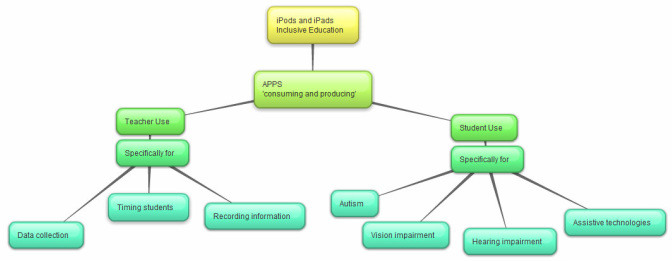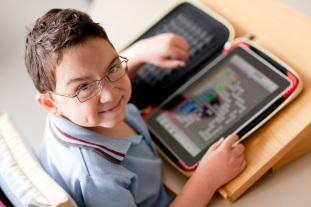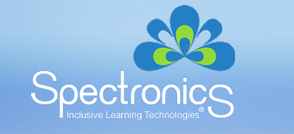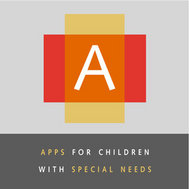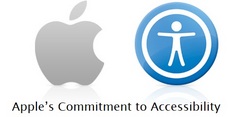Using Mobile Devices in Inclusive Education
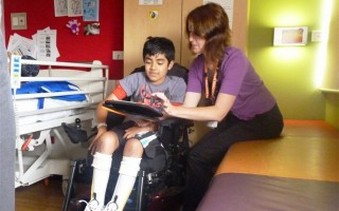
http://rch.org.au/blogs/education/2011/02/15/using-ipads-for-learning-at-rch/
HISTORY
Technology has been used in the special education field for many years. The development of software programs for computers which are specifically designed for students with special needs opened up exciting and interactive possibilities for these students and their teachers. The advent of mobile technologies, notably iPod touches and iPads, has increased the possibilities and have been taken up by the special education fraternity with gusto. There now exists a wealth of information, websites, blogs and apps targeted at a range of needs.
iPads and iPods
The interactivity, beautiful interface, exciting apps and ease of use of iPads and iPods make them very desirable teaching tools, particularly in inclusive education. In addition, iPods and iPads have the advantage of being used by the general population, which diminishes their perception as 'special education tools'. Children who use them are less likely to feel socially burdened and stigmatised by the technology. The use of APPS is the main way that teachers and students engage with this mobile technology. In the domain of inclusive education, apps are targeted at teachers and students. For teachers, apps are used to record various forms of data from the students, to 'time' students and create visual timetables. For students, the apps are targeted to a specific area of need (autism) or to augment their capabilities (large type for vision impaired students).
Technology has been used in the special education field for many years. The development of software programs for computers which are specifically designed for students with special needs opened up exciting and interactive possibilities for these students and their teachers. The advent of mobile technologies, notably iPod touches and iPads, has increased the possibilities and have been taken up by the special education fraternity with gusto. There now exists a wealth of information, websites, blogs and apps targeted at a range of needs.
iPads and iPods
The interactivity, beautiful interface, exciting apps and ease of use of iPads and iPods make them very desirable teaching tools, particularly in inclusive education. In addition, iPods and iPads have the advantage of being used by the general population, which diminishes their perception as 'special education tools'. Children who use them are less likely to feel socially burdened and stigmatised by the technology. The use of APPS is the main way that teachers and students engage with this mobile technology. In the domain of inclusive education, apps are targeted at teachers and students. For teachers, apps are used to record various forms of data from the students, to 'time' students and create visual timetables. For students, the apps are targeted to a specific area of need (autism) or to augment their capabilities (large type for vision impaired students).
iPads and iPods in Inclusive Education: Concept mapping
The concept map shows how apps can be utilised by teachers in two ways. One is through the apps which assist teachers in recording and monitoring students. The other way is through downloading apps for use by students. These apps can be targeted to the students' needs.
Take the survey
If you are a special education teacher, we would love for you to share your experiences with mobile devices, specifically iPods and iPads. The information will be collated and shared with others who view this site. You do not have to disclose your personal details to complete the survey.
Useful online resources for Special Educators
Bronwyn Sutton is a Speech Pathologist who runs workshops in Australia on 'Apps for Autism'. This workshop delivers a wealth of information to Special Educators interested in exploring the use of apps for children with special needs. Many of the websites listed below are mentioned in Bronwyn's workshop.
Check Out the App Before You Buy
Apps created for Special Education can be more costly than other apps found on iTunes. View the 'jing' video below to find out ways to check out the app before you buy it.
Search YouTube
YouTube is a helpful resource when searching for information on Apps for children with Special Needs. Included below is an interview with a Speech Pathologist, two demos of apps, and older video footage of iPods being used in a special education classroom.
Lois Brady: Apps for Autism
Lois Brady has a special interest in apps for children with autism spectrum disorder. In the video, she is being interviewed by Craig Evans of Autism Hangout.
ArtikPix
Created by RinnApps, ArtikPix can be utilised by Speech Pathologists for students with articulation needs. There is a facility to record, store and publish data using this app. Australian consumers need to be aware of the pronunciation differences in apps developed in and for the North American market.
Percentally
Another creation by RinnApps, Percentally converts raw scores into percentages and allows the teacher to save these scores. Particularly useful when collecting data on student progress on a particular program or skill. It can also collect data on targeted behaviours for behaviour support programs. Begin the video to see Percentally in action.
Examples From the Classroom
In this video, the special education teacher demonstrates how iPods are used in her classroom. This example shows the recording of voice and video, which is useful in this scenario for students with hearing impairment. Apps are not the focus of this setting. It reminds the iPod user of the video and voice recording capabilities of these devices.

MOBILISed is licensed under a Creative Commons Attribution-NonCommercial-ShareAlike 3.0 Unported License.
